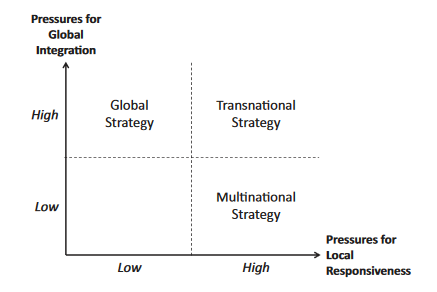Introduction
It is crucial to note that when developing an international business strategy, it is necessary to focus on the target consumer segments and the main methods of competition. In addition, it is necessary to comprehend clearly the environment in which the company will operate (Verbeke and Asmussen 1066). It includes both the internal and external environment.
Apart from that, it is essential to set such strategic goals that will be measurable and achievable and determine the tactics to achieve these goals. In general, international business strategy involves a duplication of the business behavior model. The purpose of this paper is to develop an international business strategy for a new company.
Business Definition
The core of iFurniture business is retailing low-price furniture that can be assembled by customers. The business is targeted at moderate-income households. Importantly, the furniture is created to fit in the limited living space. Therefore, the customer segment for this business is young people with moderate income who live in moderate housing (Kanti Bose 114).
By orienting at international clients, the company will be able to offer standardized commodities at universal prices. It implies that by going international, the company will decrease the expenditures of international operations. To address customer needs, the company manufactures its goods in accordance with the lifestyle of its clients (Ashari Nasution et al. 256).
That is to say, the measurements and functions of the produced furniture correlate with the limits and requirements set by limited living space. Despite the high functionality of commodities, they are made from environmentally friendly and quality materials, which also responds to customer requirements.
In terms of the geographic scope, the business will benefit from international expansion. However, Graph 1 displays the importance of understanding the local responsiveness. Thus, the scope will orient at cost leadership and product differentiation in accordance with the knowledge regarding local requirements (Rugman and Hoon Oh 13).

To be able to gather timely information, company management will be placed at the headquarters of each region and will deliver the crucial information about local requirements to the top management. The company intends to move to advanced economies. For instance, such countries as USA, Australia, and some European countries are targeted. By adapting to various markets, the business will attain greater competitive edge.
Sources
To be able to attain a competitive advantage, the business will employ several strategies. To reach economies of scale, it will employ standardization. To develop an effective warehousing system, large showrooms will be established in suburban centers. More importantly, the clients will be considered in the value chain.
To be able to minimize the costs to a greater extent, minimum staff will be required, and the emphasis will be made on customers’ self-management. Importantly, the business aims to achieve both differentiation and cost leadership in their competitive strategy (He 46). The inclusion of customers will allow reducing the costs.
The strategic elements include four basic aspects. They are market, differentiation, economic logic, staging, and sequence of activities. The company has determined the markets; it has identified the pathways to reaching them. It is also essential to consider the sequence of activities and velocity and to determine the economic logic, which implies the strategy of attaining the returns (Narula and Verbeke 614).
The value-adding activities in terms of the current business include the production of affordable, sustainable, and multifunctional commodities in accordance with the local requirements (Nyaga Muciimi and Mwangi Ngumo 69). This approach will allow the business to sustain its competitive edge in multiple markets that it targets.
Conclusion
Thus, it can be concluded that the core international business strategy for the company lies in its durable and functional furniture that delivers value to the customers and responds to their needs. By employing differentiated strategy, it will be able to attain a greater market share and competitiveness. Overall, the company’s value chain will enable it to go international and receive profits through a considerate approach towards business strategy.
Works Cited
Ashari Nasution, Reza, et al. “The Customer Experience Framework as Baseline for Strategy and Implementation in Services Marketing.” Procedia, vol. 148, 2014, pp. 254-261.
He, Ning. “How to Maintain Sustainable Competitive Advantages.” International Journal of Business Administration, vol. 3, no. 5, 2012, pp. 45-51.
Kanti Bose, Tarun. “Market Segmentation and Customer Focus Strategies and Their Contribution towards Effective Value Chain Management.” International Journal of Marketing Studies, vol. 4, no. 3, 2012, pp. 113-121.
Narula, Rajneesh, and Alain Verbeke. “Making Internalization Theory Good for Practice: The Essence of Alan Rugman’s Contributions to International Business.” Journal of World Business, vol. 50, no. 4, 2015, pp. 612–22.
Nyaga Muciimi, Ericlee, and Evanson Mwangi Ngumo. “Implications of Globalization for International Business Strategy: A Multi-Sectoral Approach.” International Journal of Science and Research, vol. 3, no. 4, 2014, pp. 68-78.
Rugman, Alan, and Chang Hoon Oh. “Why the Home Region Matters: Location and Regional Multinationals.” British Journal of Management, vol. 24, no. 4, 2012, pp. 1-17.
Verbeke, Alain, and Christian Asmussen. “Global, Local, or Regional? The Locus of MNE Strategies.” Journal of Management Studies, vol. 53, no. 6, 2016, pp. 1051–1075.